I have done a lot of coastal photography over the last few months, and tried to improve at street photography, but autumn draws me back to the woodland.

Woodland photography is not an easy genre of photography in which to succeed.
By their very nature woodlands and forests are messy and chaotic, often with masses of tangled branches, too many trees growing together blocking a clear view of any of them, and fallen trees or branches scattered over the ground.
In these circumstances a photograph can become difficult to compose and you can be frustrated and disappointed with your efforts.
Yet if you are interested in woodland photography you will want to overcome these challenges and find some ways to compose a pleasing image. To do this you will need to find some order in the chaos, some way of looking at the woodland so that instead of seeing chaos you see potential.
How do you do this?
As this has been my personal challenge since starting woodland photography I will outline some of the solutions I have found.
They may not have resulted in amazing images, but they do help me to improve at woodland photography and to feel less frustrated with this photography genre.
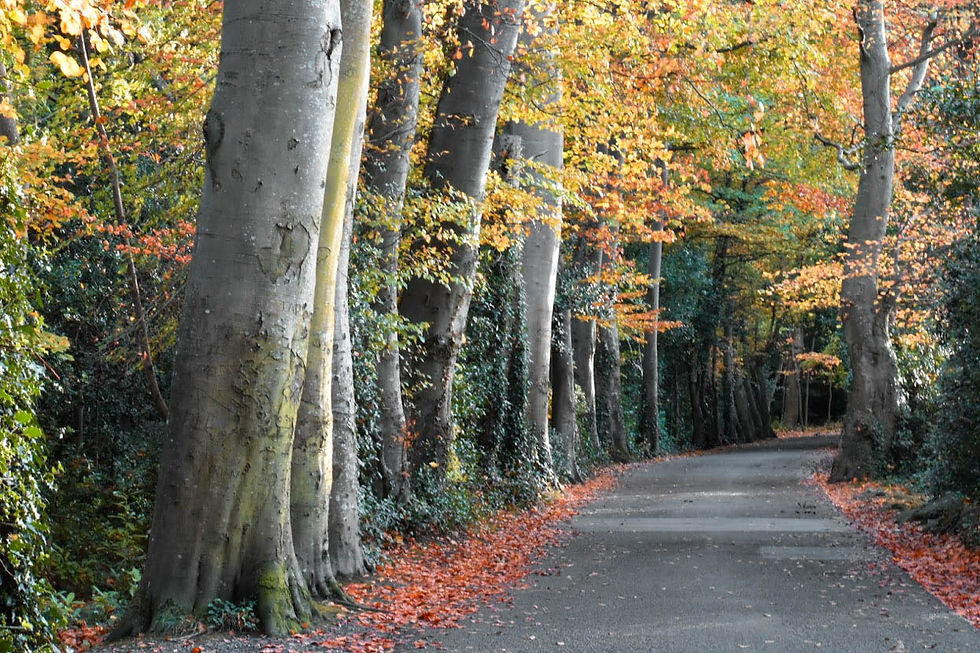
EXPLORE
One of the first suggestions I offer is to get out and explore your local woodland area.
Go often and get to know the area well. This will make it easier to find subjects that pique your interest.
Get to know the trees and how they relate to each other; get to know the unusual features of the woods; discover the little things that make this woodland special and unique.
As you visit a woodland often you will get to know its mood at different times and in different seasons and you will become familiar with all the possibilities it offers for photography.
SIMPLIFY THE SCENE
As in any type of photography, the way you choose to compose your image is important in woodland photography, if a little more challenging.
What you don’t want is a shot of a great subject that is undistinguishable from a cluttered background.
To make order out of the chaos in a woodland scene you need to simplify the scene in some way and isolate your subject so that it becomes prominent in the image.
Shooting when there is fog or mist is one obvious way of doing this and these weather conditions are ideal for separating elements in a scene.
Unfortunately, we are not always lucky enough to have misty conditions, so we must work with what we have.
One of the problems I have encountered is that when I try to isolate my subject my eye tends to filter out the background, but the camera does not. When I look at my image on the computer it is then that I see the cluttered background.
I have learned that in the woodland I have to see differently.
Since it is difficult to single out an individual tree, one thing I have tried is to photograph a group of trees together, often where I see a connection among the trees in the group.
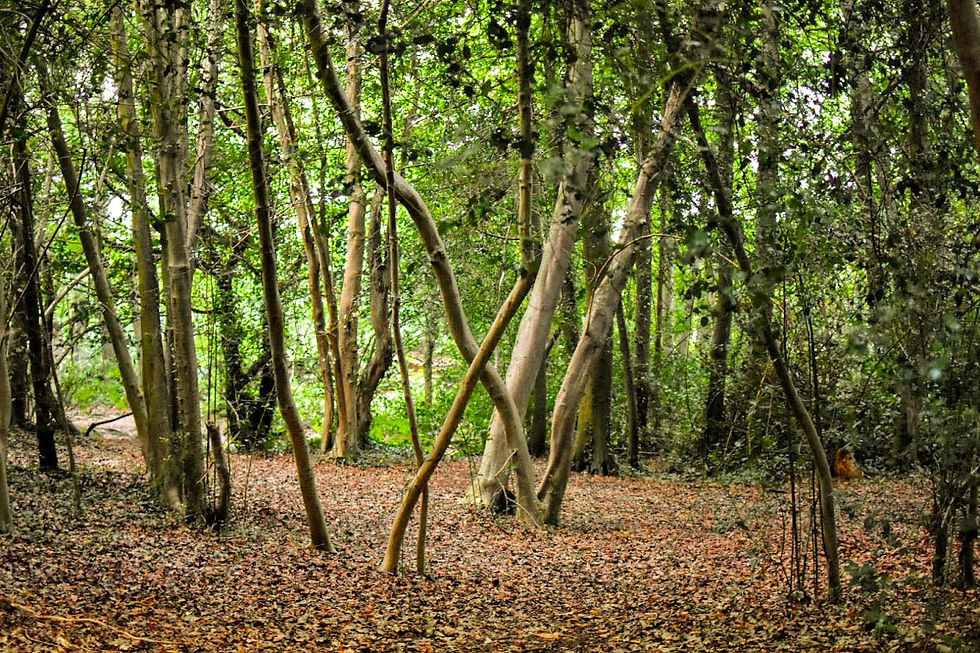
This can also create a story in the image.
An alternative is to try to pick out an unusual feature of a tree or to use a telephoto lens to focus on a small part of a tree, for example a pattern in its branches or an interesting trunk.
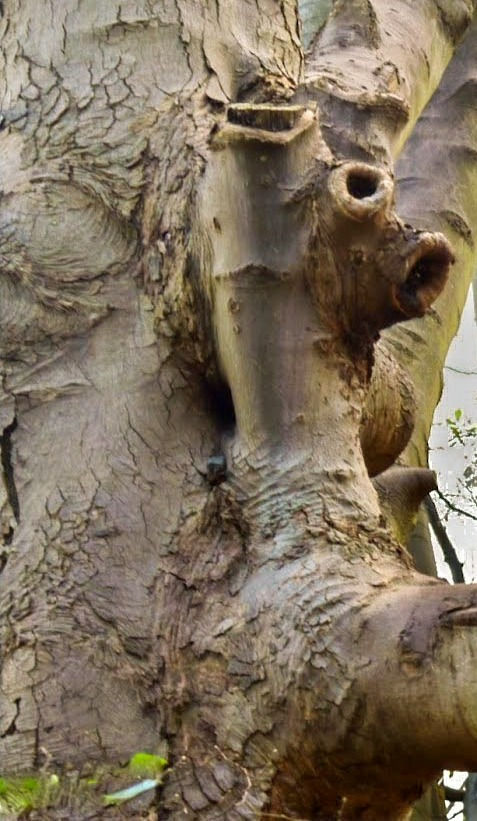

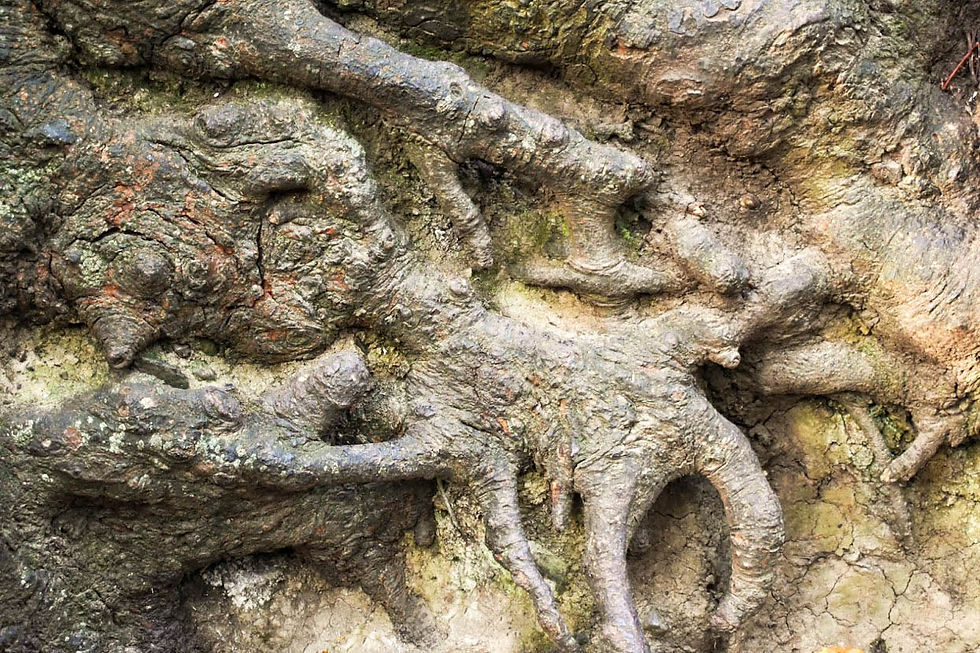

A shallow depth of field can also serve to separate a subject from the background and give it some prominence in the image. It can be done by focusing on smaller details.
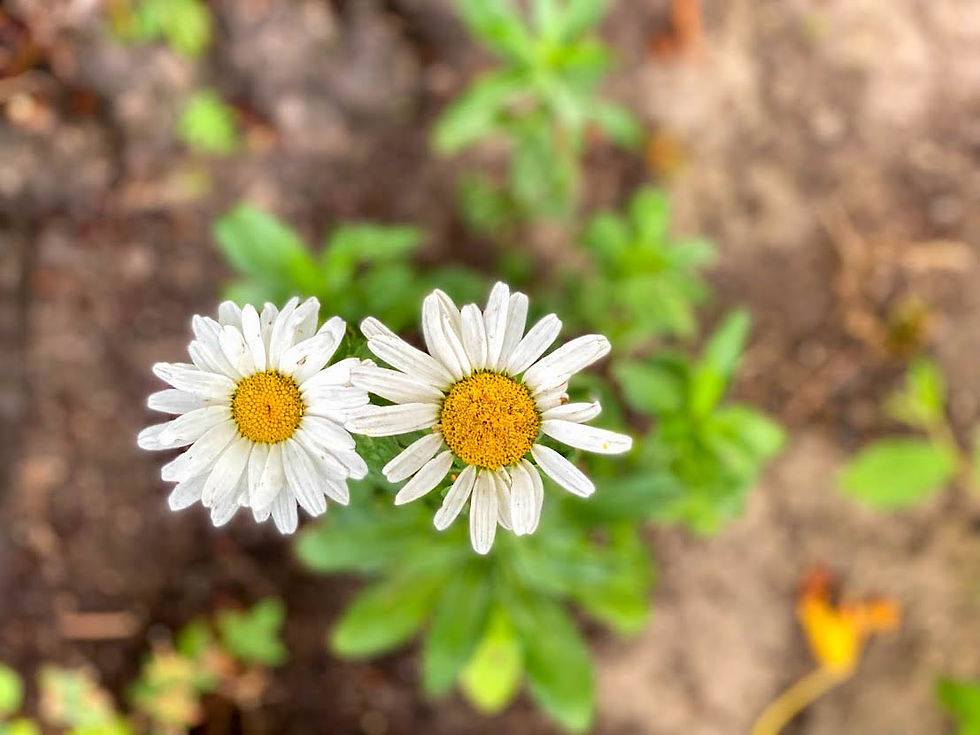
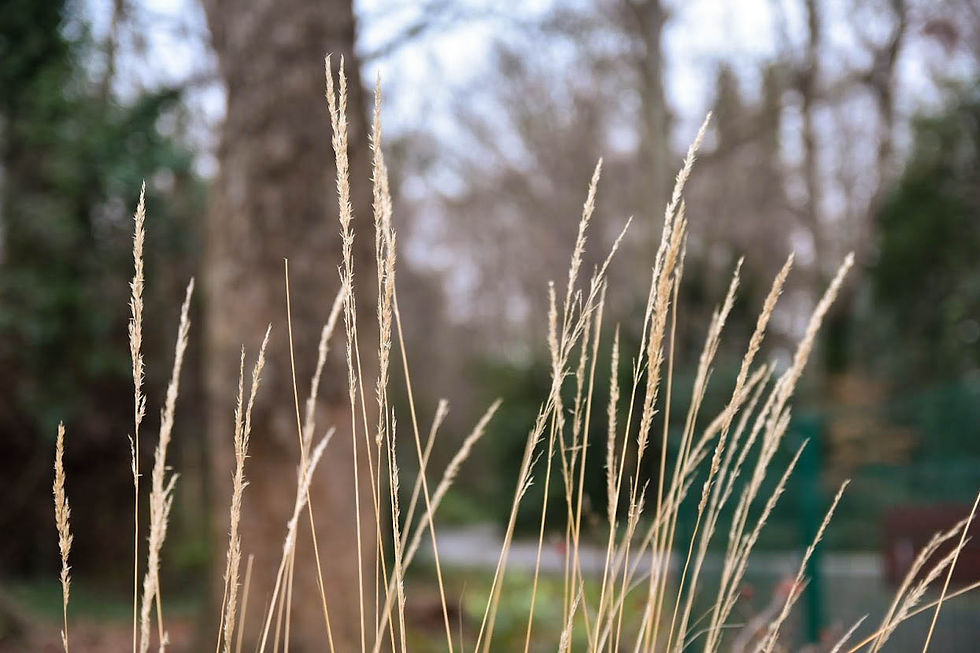
While a shallow depth of field does allow us to exclude the clutter in the background it is not suitable for every photograph.
But a sense of depth can be achieved in other ways.
USE COMPOSITIONAL RULES
Leading lines
The compositional technique of using leading lines is relatively easy to use in a woodland and this can help to avoid the chaotic woodland landscapes to some degree. Leading lines serve to create depth in your image and add a sense of mystery but the technique cannot be overused or your images will appear repetitive and lacking in creativity.


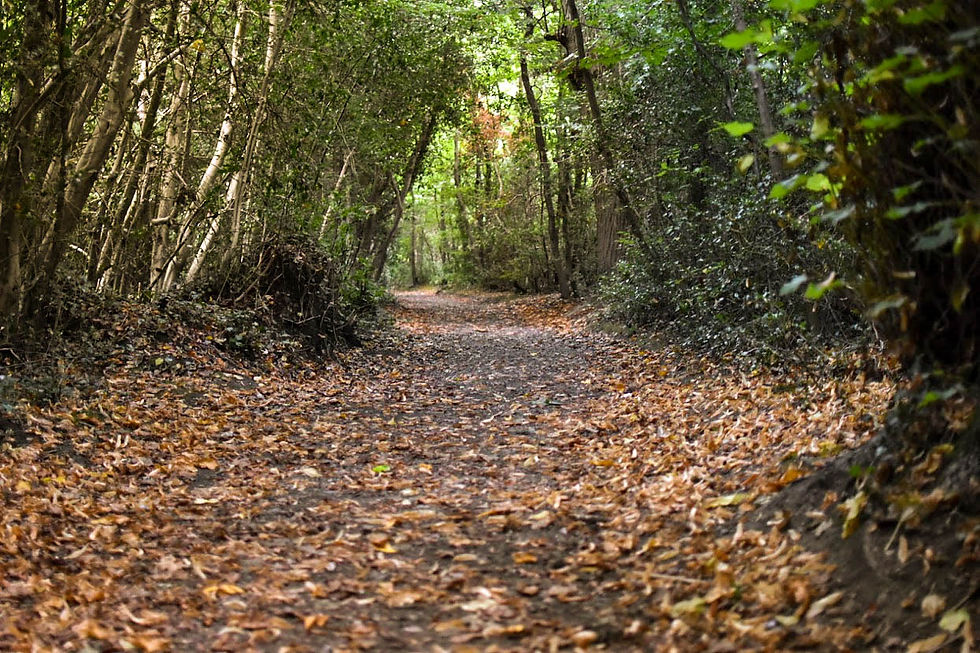
Pathways are relatively easy to find in most woodlands and they can create a sense of depth in the image.
Another way to achieve a sense of depth in your image is to get down low and include some foreground. This can create the effect of looking into the distant forest, into the unknown.
Rule of Thirds
Using the Rule of Thirds can also be an effective technique to give prominence to your subject in a woodland scene.
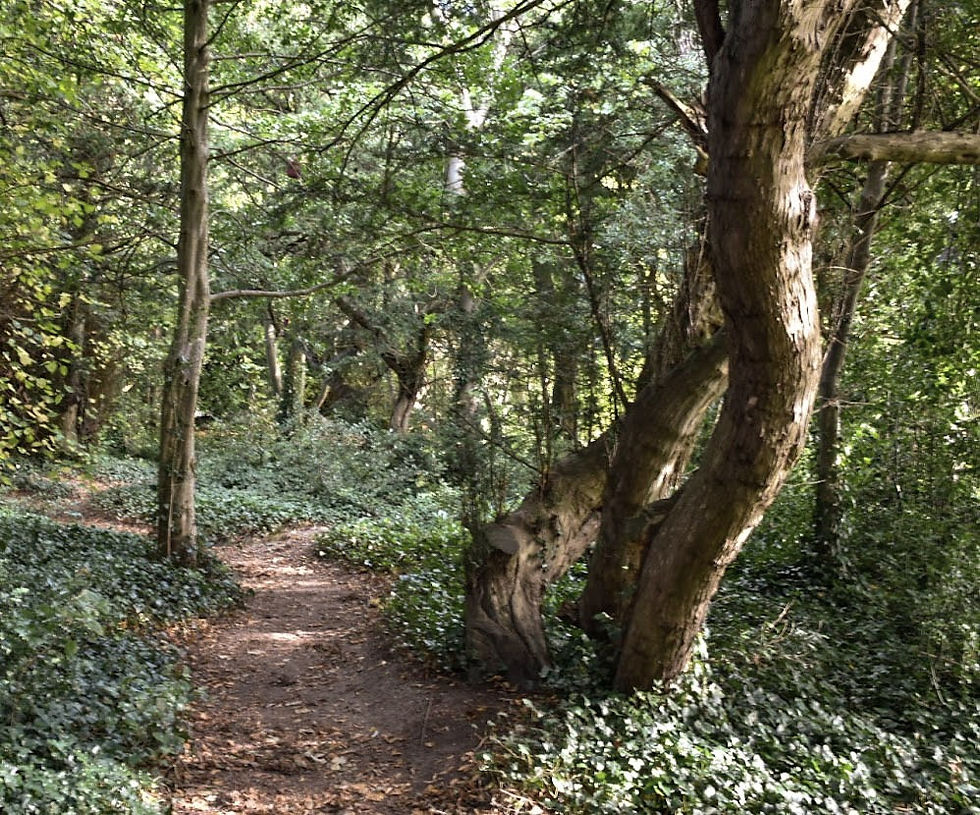
By moving the subject to one side you can include some background to show context but still be clear about what is the main subject.
Natural Framing
This compositional tool also has a place in woodland photography. Shooting between trees can achieve this effect, as well as using the myriad of over-reaching branches as natural frames.
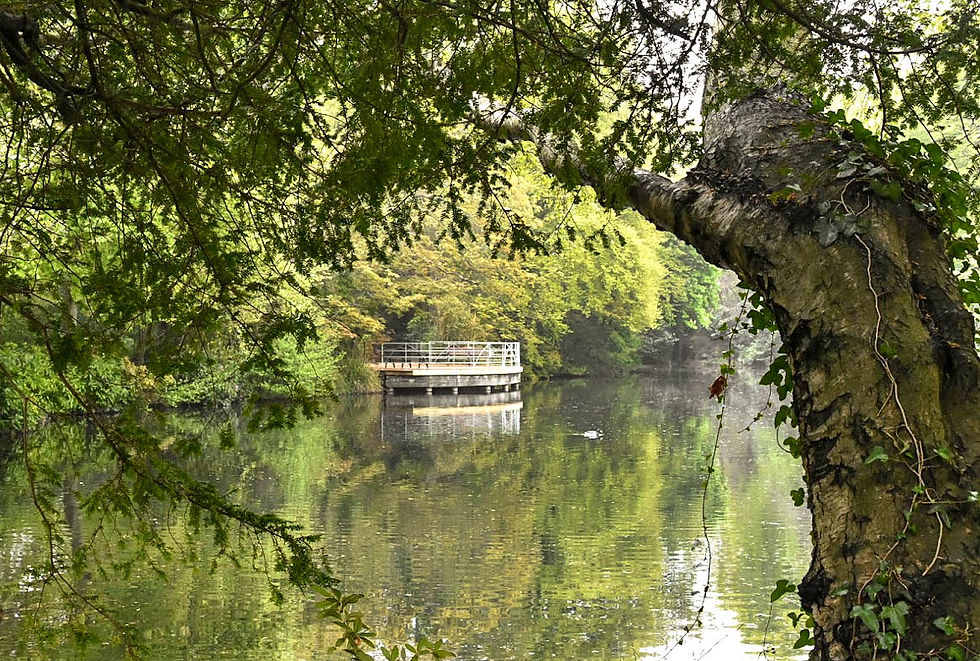
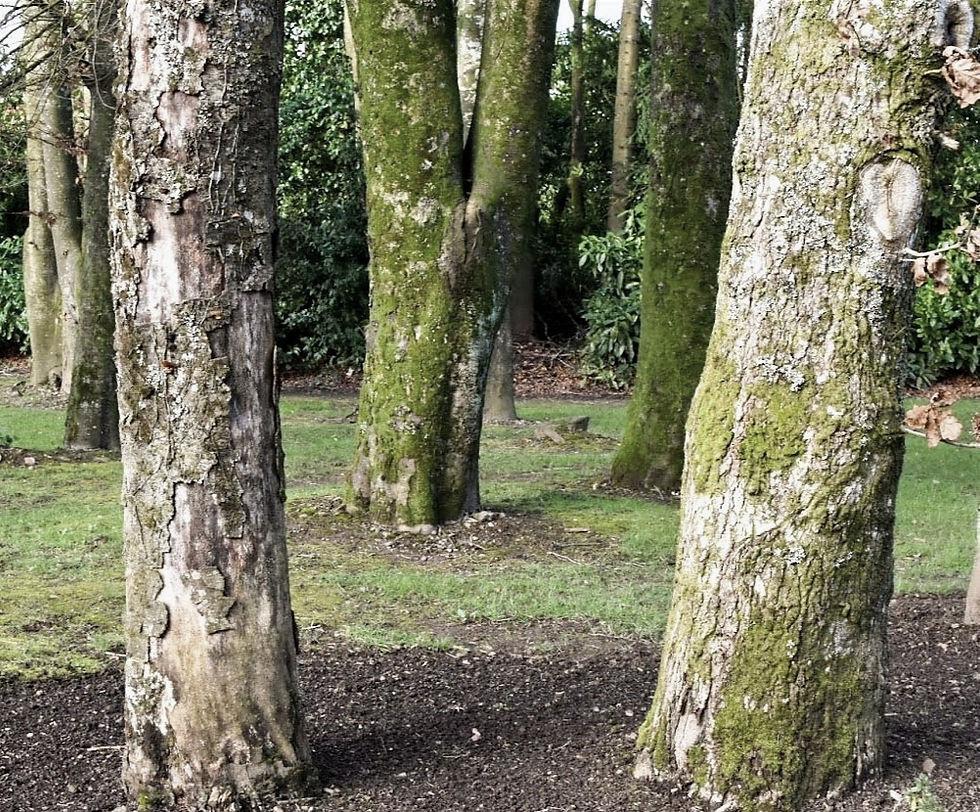


Use contrast
Normally in photography you will want to draw as much attention as possible to your subject. If the subject is to attract the eye of the viewer it needs to stand out from its surroundings.
This can be difficult to achieve in a messy woodland scene.
One way to help the subject stand out is to provide as much contrast as possible between the subject and background.

Use colour, shape and pattern to provide contrast in the image.




Sometimes the sun will play its part!
As well as employing a range of compositional techniques to help you achieve captivating images in a busy woodland environment, there are some compositional mistakes to watch out for.
Including a lot of sky in your image can provide too much contrast, while unintentional overlapping of trees is not pleasing to the eye.
Distractions in the frame can also be an issue. In a woodland it is very easy to come away with an image that has unwanted twigs or branches protruding from the edges so it is important to check the edges of the frame as you compose your image and move your camera to produce the cleanest possible image.
FOCUS ON THE SMALL WOODLAND WORLD
A woodland or forest is more than just large trees. It has a whole world going on at our feet, with potential for macro or close-up images.
You can focus on these tiny details using a macro lens, make a composition using a telephoto lens or focus in on a leaf or forest vegetation.
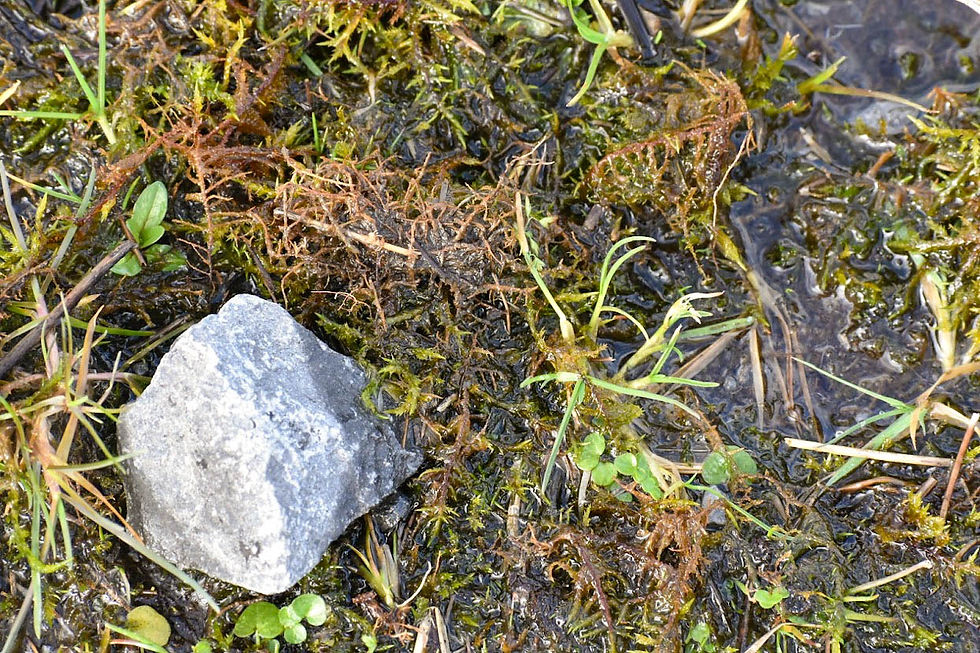
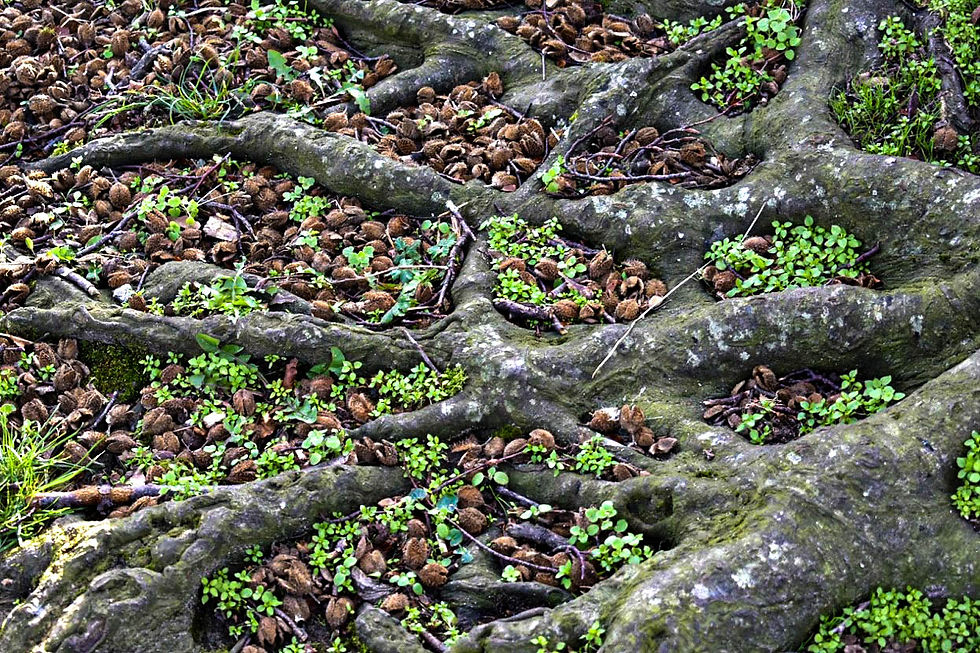
BE ADVENTUROUS
Veer off the beaten path to find new compositions.
Look for unique details, things that stand out; for example, a red leaf among greens or a splash of bright colour in a dark environment.
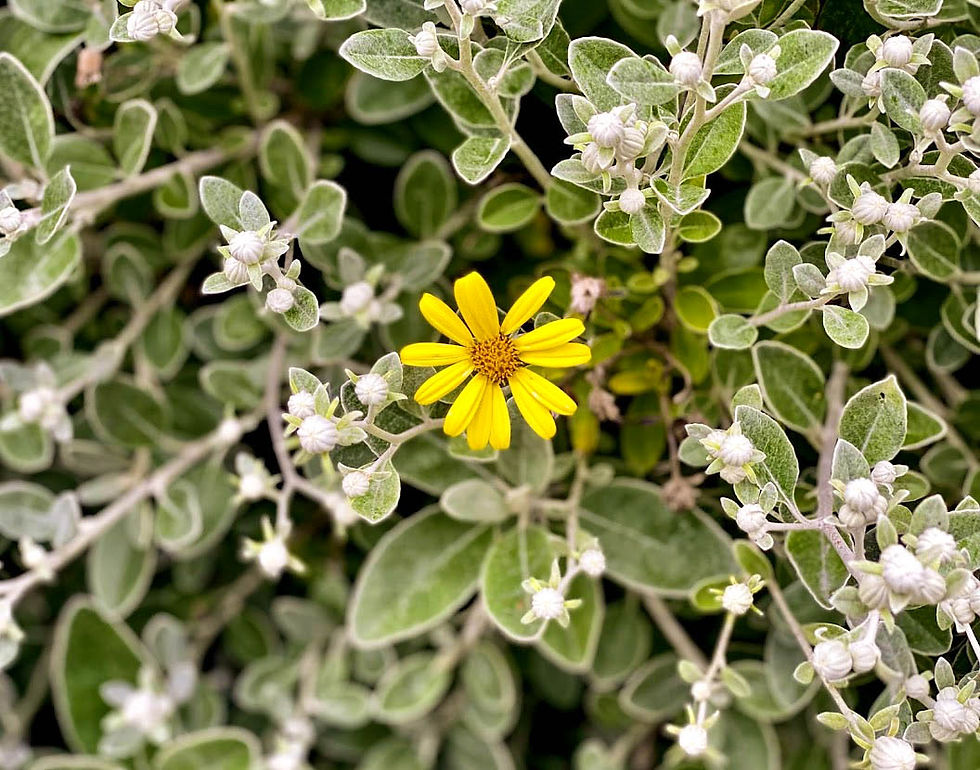
Seek out a little pool or waterfall and experiment with different shutter speeds.
Look up and capture some gnarly branches.
Find interesting places to stand, such as in the middle of a pool or under a bridge. Get down low to include more interesting foreground elements.

INCLUDE A HUMAN ELEMENT
Sometimes including people in your images gives a sense of scale to the image, provides an element of story or adds interest to an otherwise boring scene.
Often if you stay in one spot and wait you can capture a person walking past and position them in the frame in exactly the way you want.
I like to capture the person walking into the frame, rather than out of the frame, or capture a spontaneous moment.
Not everyone likes to include a human element in a landscape image - its ultimately a matter of personal choice.

GET CREATIVE
There are countless opportunities to discover patterns around us in woodlands.
You can find patterns in trees, leaves and plants, patterns created by the sunlight shining through the trees, or you can create your own abstract patterns from the woodland elements.
Intentional Camera Movement (ICM) is a technique that can be readily applied in a woodland setting with interesting results.


***
These are just a few ideas to help you overcome the difficulty of getting a good image in a chaotic and busy woodland setting.
Composition in photography is a complex issue, comprising of many dos and don'ts. Yet composition is what makes the difference between a good and a bad image, and this is no different in woodland photography.
So pay attention to composition.
Compose intentionally to accentuate your woodland subjects, find as many unique ways to compose as you can, and you will come away with images to be proud of.
CONCLUSION
Woodland photography can be tricky and challenging.
It may be difficult to get a good composition amid the chaos that is a typical woodland.
But woodland photography is a type of photography like no other.
Being in a woodland is relaxing and enjoyable as you connect with the elements of nature all around you.
Photography in a woodland is exciting and hugely rewarding, and with a bit of effort you can capture great images in a busy woodland environment.
All that is needed is a bit of extra thought and a little imagination!



Comments